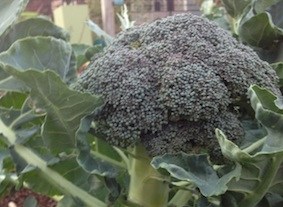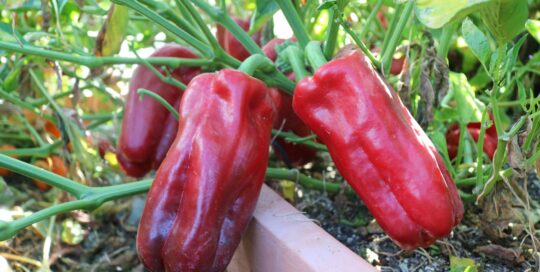Tips for Growing Broccoli
Views: 11812

Growing up on a farm in the Northeast, November was always the prime month for harvesting broccoli and other members of the cabbage group, such as cauliflower, Brussels sprouts, and kohlrabi.
As a kid I spent my summers driving a tractor at about 1 mile per hour down a field, row after row, towing a machine seating two people who were diligently inserting baby cabbage, broccoli, or cauliflower plants about 12 inches apart as the machine dug a furrow. Then came the weeks of manually hoeing the rows, manually moving irrigation pipe through the crop, and in the case of cauliflower, manually tying the long droopy leaves into a sort of bun on top of the plant to keep the bulging head pristine white. It was a hot, dirty, and mind-numbing process.
About four months later, the payoff finally came. When I think of harvesting broccoli, I think of my brother’s hands. Harvesting the crop is labor intensive. Walk the row, stoop to grab the head, bend it slightly and give the base of it a quick whack with a machete-type knife; a few small flicks of the knife trim off the superfluous leaves; then jam the head into a crate or box. For best results, this is done barehanded. In the cold, and often in the rain, my brother’s hands were always red, cracked, and swollen this time of year.
When to Plant Broccoli
My garden neighbor gave me six broccoli plants this year. I planted them within a day or two of his planting, but thanks to a poor fertilizing job (yet again) they lagged behind growthwise. It seemed like they were all thick stem without a developing flower head. His seemed to do quite well.
Where our two broccoli crops converge again is in the timing. Once both day and night temperatures cooled significantly, the broccoli heads really filled out nicely. I harvested one head before the cool down. It had a few florets that were about to burst open, a sure sign it was ready for harvest, but the head seemed quite small. About 10 days and 20 degrees later, the remaining broccoli looked like how broccoli is supposed to look. Boy, was I proud!
For Northeast gardeners, plant transplants in August into compost-rich soil. (I added some, but not enough!) For mild-winter folks, you can plant in fall for an early spring crop, and also in mid winter for a later spring crop.
Keep the soil on the moist side. Mulch, mulch, mulch!
Preventing Pests
Keep an eye on the center of the plant, even before the heads begin to develop. Pests, particularly soft-bodied insects such as mealy bugs, can find their way in there to eat the new growth.
Solution? Give the center of the plant a firm but gentle spray of water to dislodge the pests. Also, spray in a direction where they wont fly off and then INTO another broccoli plant!
When to Harvest
If you can help it, don’t harvest until after the day and night temperatures have fallen and stayed low. There’s something about the drop in temperature that makes the broccoli quite sweet and very flavorful.
Cooking Broccoli
Cut a broccoli head into even chunks. In a bowl, add a light amount of olive oil and sprinkle in some kosher salt and fresh pepper. Spread out on a rimmed baking sheet and pop into a 420F oven for 20 minutes. About 10 minutes in, sprinkle 1/2 cup parmesan cheese on top. Squeeze half a fresh lemon on top when you remove from the oven.
Meet Ellen Wells
When you’re raised on a farm, you can’t help but know a thing or two about gardening. Ellen Wells is our expert on edible gardening.…
Ellen's Recent Posts

Pepper Red Impact an All-America Selections Winner






